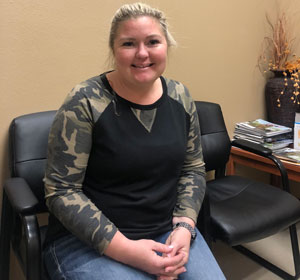Radiofrequency Ablations for Lower Back Pain
Written by Nevada Advanced Pain Specialists staff

Lower back pain is something that almost everyone will experience at some point in their lifetime. In fact, lower back pain is the number one cause of disability in the United States. Lower back pain may resolve itself, however when it does not and lasts longer than 3 months it is considered chronic pain and should be addressed by a professional.
Many factors can contribute to lower back pain such as weight gain, sedentary lifestyle, lifting heavy objects, or natural degeneration over time. When joints become arthritic in the lumbar spine, you may develop chronic lower back pain. There are many conservative treatment options for this condition which include medications, massage therapy, and physical therapy. If your lower back pain does not resolve with conservative care, then you might be a candidate for an injection treatment option known as a radiofrequency ablation or RFA.
RFAs are a common, nonsurgical treatment option for patients who suffer from chronic back and neck pain due to arthritis. RFA uses an electrical current to deliver heat to targeted spinal nerve tissue that is responsible for causing the patient to have pain. When the heat ablates or eliminates the nerve, it stops the transmission of pain signals to the brain. If your provider thinks an RFA could help your pain, they will first recommend diagnostic blocks. When two diagnostic blocks successfully help your pain temporarily, this indicates that the RFA is the right treatment option to treat your chronic spinal pain.
Once your provider has determined that you’re an RFA candidate after two successful nerve blocks, you’ll be scheduled to have the RFA procedure. This non-invasive procedure is done right in our office and only takes a few minutes. On the day of the procedure, you’ll be taken back to a procedure room and will lie down on your belly. Your back will be prepared for the ablation by cleaning the area that your provider will be working on. A local anesthetic will be used to numb the area just like what you would experience at a dentist office. Using fluoroscopy (an x-ray unit), a small hollow needle will be placed down to the area responsible for your pain. The fluoroscopy allows the doctor to see precisely where the needles are, ensuring that the ideal placement is achieved for pain relief. This process is usually not that uncomfortable and you may feel some slight pressure.
After the needles are placed, an electrical current will be used to create heat at the tip of the needle for 90 to 120 seconds to eliminate the nerve that is causing your pain. The procedure can leave you sore for several days but will not stop you from performing your everyday tasks. Although everyone is different, you should feel pain relief for 9-12 months.
Patient Perspective

Amanda has been seeing Dr. Patterson for over 10 years. She comes in for routine RFAs and says it has been life changing. After multiple lower back surgeries, she was left with chronic lower back pain. Over the years, routine radiofrequency ablations have allowed her to get back to an active pain free life.
“As a mom, getting another debilitating surgery just isn’t an option,” which is why a non-invasive option works best for so many patients like her. She typically gets 80-90% pain relief and has been able to avoid further surgical procedures due to RFAs.
